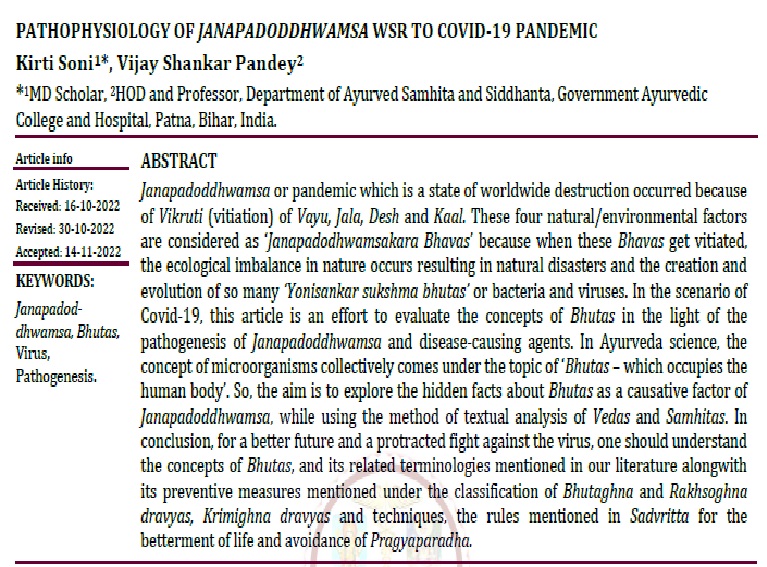Pathophysiology of Janapadoddhwamsa wsr to Covid-19 Pandemic
DOI:
https://doi.org/10.47070/ayushdhara.v9i5.1068Abstract
Janapadoddhwamsa or pandemic which is a state of worldwide destruction occurred because of Vikruti (vitiation) of Vayu, Jala, Desh and Kaal. These four natural/environmental factors are considered as ‘Janapadodhwamsakara Bhavas’ because when these Bhavas get vitiated, the ecological imbalance in nature occurs resulting in natural disasters and the creation and evolution of so many ‘Yonisankar sukshma bhutas’ or bacteria and viruses. In the scenario of Covid-19, this article is an effort to evaluate the concepts of Bhutas in the light of the pathogenesis of Janapadoddhwamsa and disease-causing agents. In Ayurveda science, the concept of microorganisms collectively comes under the topic of ‘Bhutas – which occupies the human body’. So, the aim is to explore the hidden facts about Bhutas as a causative factor of Janapadoddhwamsa, while using the method of textual analysis of Vedas and Samhitas. In conclusion, for a better future and a protracted fight against the virus, one should understand the concepts of Bhutas, and its related terminologies mentioned in our literature alongwith its preventive measures mentioned under the classification of Bhutaghna and Rakhsoghna dravyas, Krimighna dravyas and techniques, the rules mentioned in Sadvritta for the betterment of life and avoidance of Pragyaparadha.
Downloads

Downloads
Published
Issue
Section
License
Copyright (c) 2022 AYUSHDHARA

This work is licensed under a Creative Commons Attribution-NonCommercial-ShareAlike 4.0 International License.


